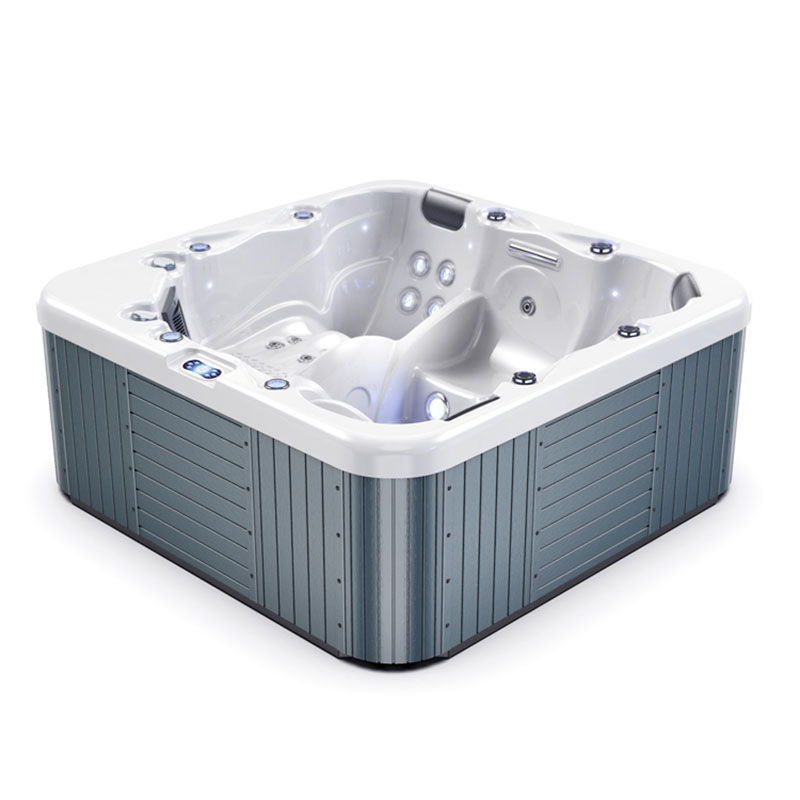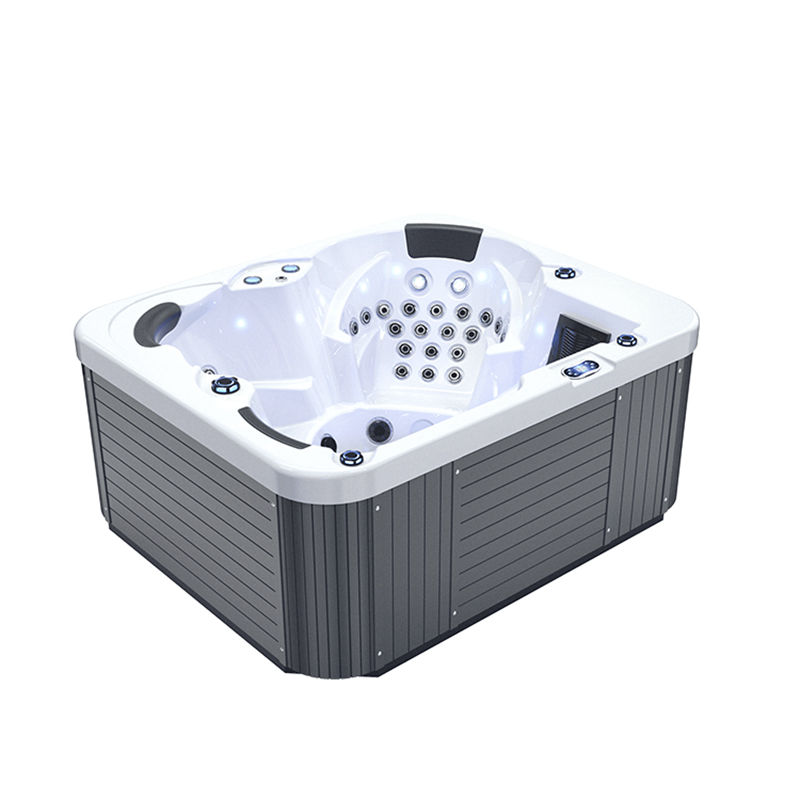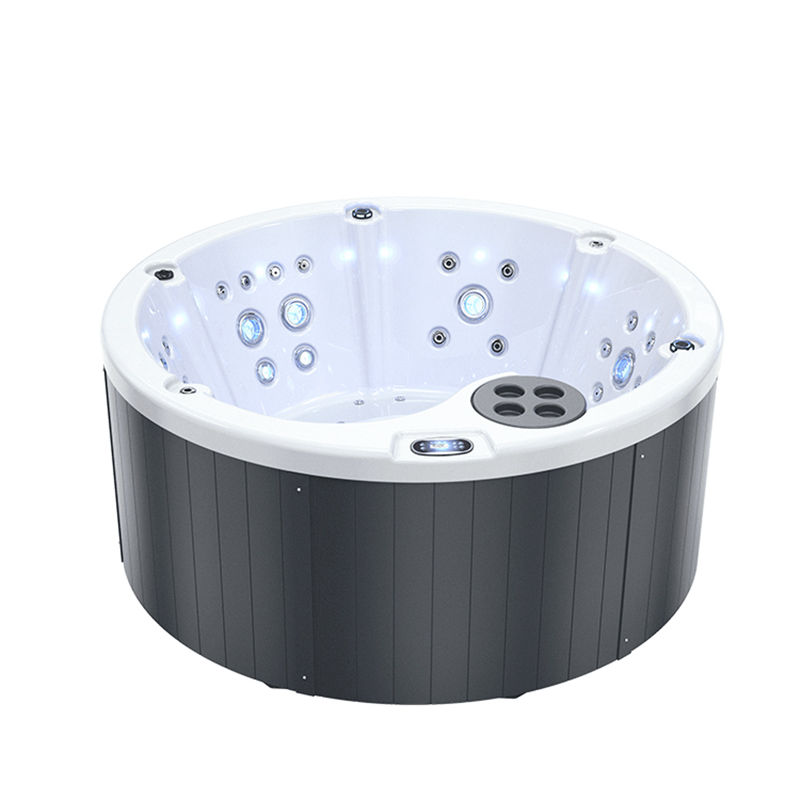Maintenance of whirlpool spa hot tubs is vital for every user, especially keeping the water clear and sanitary. However, many people encounter a common problem when using a whirlpool spa hot tub - the water in the tub turns green. This phenomenon is often associated with algae growth, as algae growth can indeed cause the spa hot tub water to turn green. However, when you take a closer look and find that there is no obvious algae precipitation, the phenomenon becomes more confusing.
So why does your whirlpool spa hot tub turn green but no algae? This article will explain the scientific principles and provide some effective treatment methods.
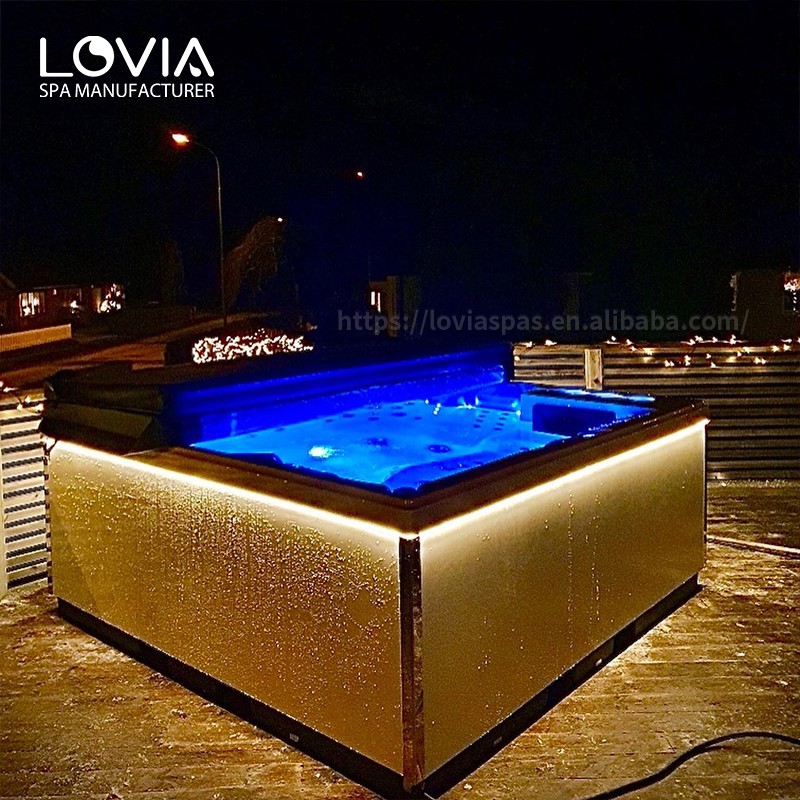
What are the causes of green spa hot tub water?
Whirlpool spa hot tub water turning green is usually related to algae, but when it is confirmed that there is no algae, there are other possible reasons for the water quality to turn green. To get to the root of the problem, we need to understand several potential factors, including minerals, chemical imbalances and external pollution.
High copper levels
Copper is a very common mineral found in tap water, plumbing systems, and some whirlpool spa hot tub equipment. When the copper level in a whirlpool spa hot tub is too high, the copper ions dissolve in the water and react with other chemicals in the water, eventually causing the water to take on a green tint. Sources of copper may include:
● Pipe corrosion: If your home has copper pipes, over time, the pipes may corrode, causing small amounts of copper to enter the water.
● Fill water source: If you have well water or hard water, they tend to have higher concentrations of minerals, including copper.
● Chemical treatment: Copper may be found in some water maintenance products, especially those used to inhibit algae growth. These products are effective in preventing algae growth, but may increase the copper level in the water.
When the copper in the whirlpool spa hot tub reacts with disinfectants such as chlorine or bromine, the copper ions are oxidized to produce a green compound that causes the water to discolor.
High iron or manganese levels
Iron and manganese are another type of mineral that may cause water to turn green. When spa water has high levels of iron or manganese, these metals can also react with disinfectants, especially under oxidizing conditions, to form colored compounds. Iron often gives spa water a yellow or brown tint, while manganese may give it a slightly green or tea-colored tint.
Similar to copper, the sources of iron and manganese are often sediment in well water or pipes. If your home has well water or hard water, these minerals can build up in the water, eventually causing discoloration.
Imbalanced pH in the water
pH is an important factor affecting whirlpool spa water quality and is often used to measure the acidity or alkalinity of water. When the pH of a whirlpool spa is too high or too low, it can not only affect the effectiveness of disinfectants, but it can also cause metal ions to react with other chemicals, causing the water to change color. If your whirlpool spa water is green and you have confirmed that there is no algae present, checking the pH is a critical step.
● Too low pH: When the pH is too low, the water becomes more acidic, which can cause metal parts in the tub to corrode, releasing metal ions such as copper or iron.
● Too high a pH: A high pH can reduce the effectiveness of disinfectants and prevent them from effectively treating organic contaminants in spa water. It can also promote mineral precipitation, which can cause discoloration.
Ideally, the pH of a whirlpool spa hot tub should be maintained between 7.2 and 7.6 to ensure optimal effectiveness of the chemicals and consistent water quality.
Redox reactions
Sometimes, whirlpool spa hot tub water turns green due to a redox reaction. This usually involves certain minerals in the water, such as copper or iron, reacting with disinfectants such as chlorine or bromine. Redox reactions are processes where electrons are transferred between substances. In this case, minerals are oxidized to form new compounds, which in turn give the water a different color. Since these oxidation products are mostly green in color, the water takes on a green hue.
External contaminants
The water quality of a whirlpool spa hot tub can also be affected by external contaminants. For example, pollen, dust, and other organic matter from the air can be brought into the tub. These substances, when combined with minerals and chemicals in the water, can cause color changes. Additionally, certain cosmetics, perfumes, or body oils may react with chemicals in the water, turning the water green.
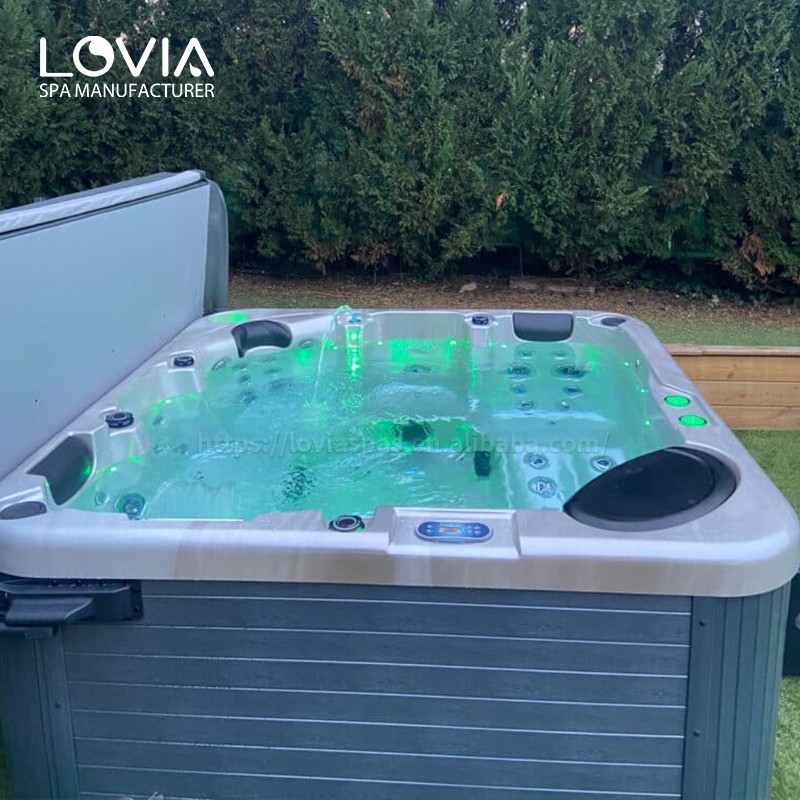
How to deal with green water in a whirlpool spa hot tub?
Now that we know the main causes of green water in a whirlpool spa hot tub, let's discuss how to deal with these problems to ensure clean, clear water in your tub.
Test for mineral content
First, use a professional spa hot tub water quality test kit to test the water for metals, especially copper, iron, and manganese. These kits can help you determine if there are excess minerals in the water. If the metal levels are found to be too high, a specialized metal scavenger can be used. These products can effectively capture and remove free metals from the water to prevent them from reacting with other chemicals.
After adding the metal scavenger, continue to monitor the water quality and use it regularly according to the product instructions to prevent the accumulation of metal deposits.
Adjust the pH
Make sure the pH of the whirlpool spa hot tub is within the ideal range (7.2 to 7.6). If the pH is detected to be out of this range, the pH can be adjusted by adding acidic or alkaline chemicals. Typically, pH is lowered by using an acidic conditioner (such as dry or liquid acid) and raised by using an alkaline conditioner (such as sodium bicarbonate).
Once the pH is back to normal, the chemical reactions in the water will be more stable, which will reduce the problem of water discoloration caused by metal oxidation.
Shock your whirlpool spa hot tub regularly. Shocking your whirlpool spa hot tub regularly is also a key step in maintaining clean water quality. Shocking quickly breaks down organic matter, chemical residues, and disinfection byproducts in the water by adding a large amount of oxidizing agents. Both chlorine-based and non-chlorine-based shocking agents can effectively help restore water clarity.
In addition, shocking helps break down metal ions in water compounds, preventing them from depositing in the tub or reacting with other chemicals to cause water discoloration.
Replace the fill water
If your whirlpool spa hot tub uses well water or hard water with a high mineral content, consider replacing some or all of the fill water regularly. By using softened tap water or filtered water, you can reduce the accumulation of minerals and avoid the problem of green water quality.
In addition, when you first fill the whirlpool spa hot tub, you can use a water softener to reduce the mineral content in the water and prevent chemical reactions caused by free metals in the water.
Keep the filter clean
The filtration system of the whirlpool spa hot tub is an important part of keeping the water clean. Regularly cleaning and replacing the filter can help remove pollutants in the water and avoid mineral deposits. In addition, keeping the filter clean helps improve the efficiency of water circulation, ensure that the chemical treatment agents in the water can be evenly distributed, and prevent water discoloration caused by local chemical reactions.
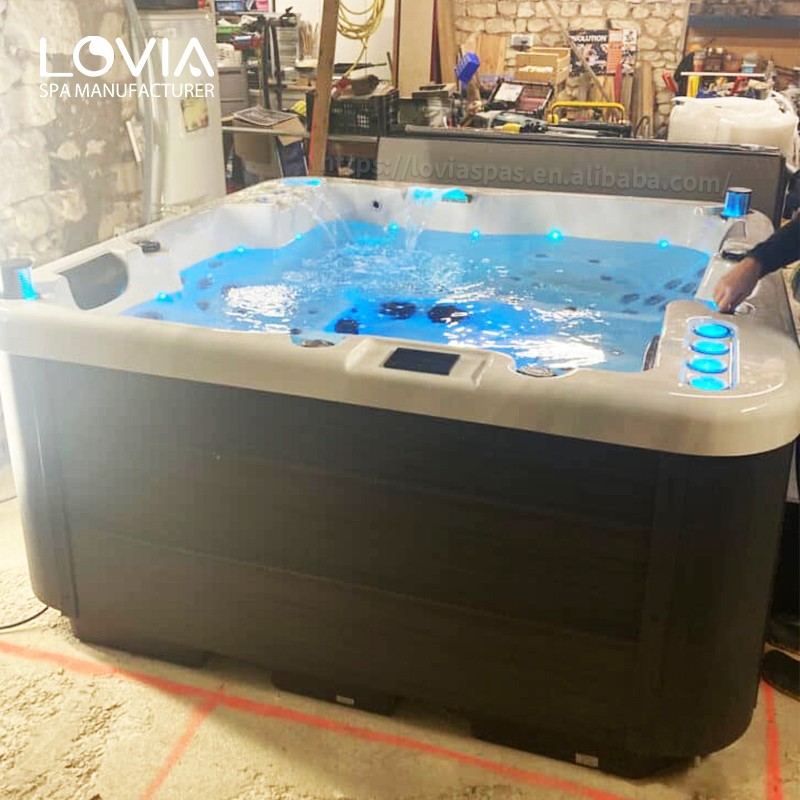
What are the measures to prevent the green water problem in the spa hot tub?
In order to prevent the whirlpool spa hot tub water quality from turning green, in addition to dealing with existing problems, users can also take some preventive measures.
Regularly test the water quality
Regularly use water quality testing tools to test the disinfectant content, pH value, alkalinity and metal content in the spa hot tub water. Timely testing can help you take effective measures before problems occur and prevent water quality from deteriorating.
Regular maintenance and cleaning
In addition to regular shock treatment, it is also very important to regularly clean the inner wall and filter system of the whirlpool spa hot tub. Dirt, grease, and other organic matter tend to accumulate on the surface of spa hot tubs, where they react with chemicals in the water, causing water quality to deteriorate. Therefore, keeping your tub clean not only prolongs the life of the equipment, but also ensures clear water quality.
Use the right chemicals
Using the right water maintenance products is also key to preventing problems. Make sure to choose quality-assured disinfectants, shock agents, and metal removers, and avoid overdosing on any chemicals.
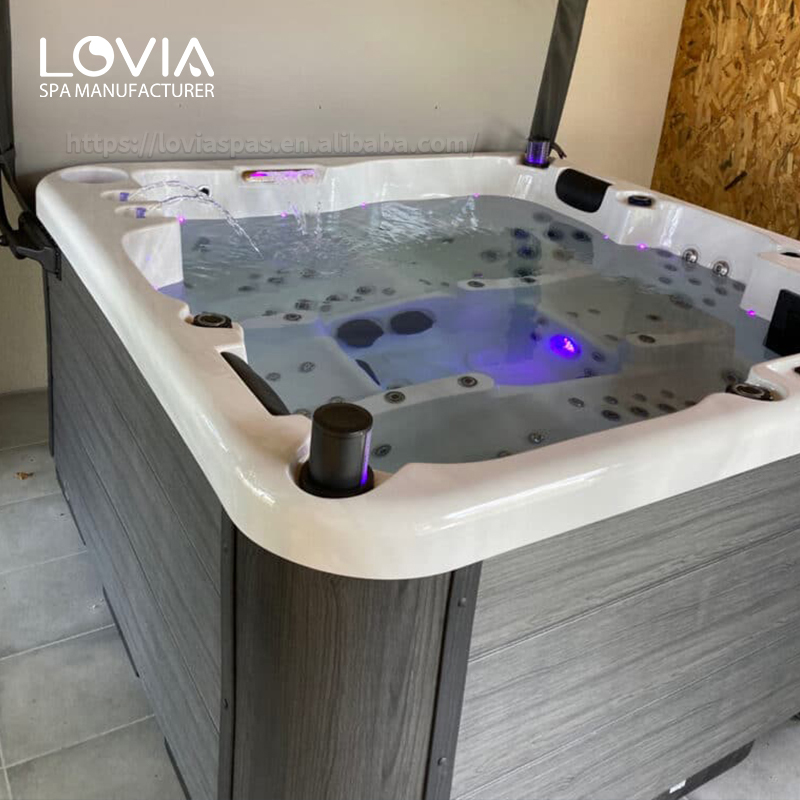
At Lovia Spa, we combine over 30 years of manufacturing experience with modern spa innovation. As a trusted supplier, we offer customizable swim spas, spa hot tubs, and wellness equipment for global brands. Benefit from our low prices, high quality, and full compliance with CE, ETL, and ISO standards. Join our global network of satisfied buyers and request a sales quote today.


